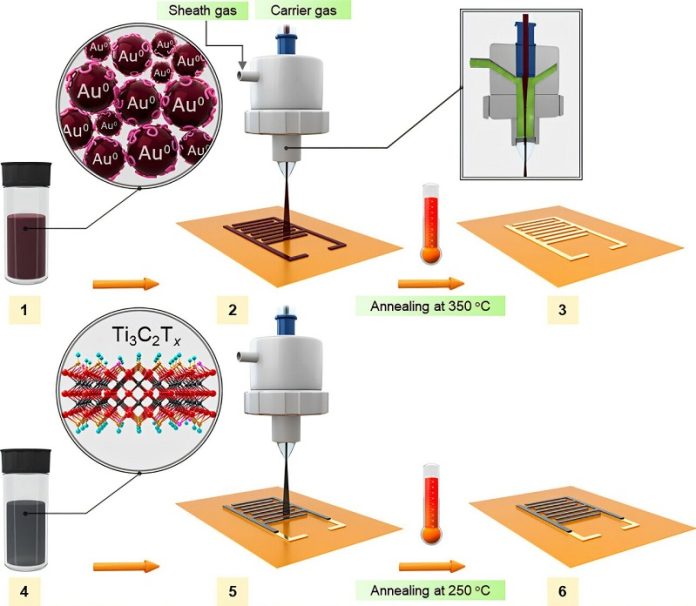
Imagine tiny energy storage devices printed directly onto flexible materials like plastic film.
Thanks to a new breakthrough from researchers at Boise State University, this futuristic idea is now one step closer to reality.
The team has created a special ink made from a material called MXene that can be used to print high-performance micro-supercapacitors—tiny devices that store and release energy quickly.
Their findings were recently published in the journal Small Methods.
MXenes are a family of advanced materials made of ultra-thin layers of metal and carbon compounds.
These materials are known for conducting electricity well and having surfaces that interact easily with water, which makes them ideal for use in energy storage.
But until now, turning MXenes into ink that can be printed onto surfaces for real-world use has been a major challenge.
MXenes can be mixed with water to form an ink, but the mixture usually spoils within a few days because of chemical reactions with oxygen in the air.
Also, to be useful in precise printing methods, the ink needs to have just the right thickness and drying speed.
Creating a version of MXene ink that remains stable over time and works smoothly with advanced printing technologies has been very difficult—until now.
The Boise State team, led by doctoral researcher Fereshteh Rajabi Kouchi, developed a new MXene ink that stays stable for over six months without additives. Even more impressive, the ink works perfectly with a printing method called aerosol jet printing, which allows materials to be printed in extremely fine lines.
The researchers successfully printed miniature supercapacitors—energy storage devices that charge quickly and last a long time—onto flexible plastic (Kapton film) and hard surfaces like ceramic tubes.
These printed devices performed extremely well, showing excellent ability to store energy, withstand repeated use, and maintain their performance over time.
In fact, they are among the best-performing MXene-based printed supercapacitors reported to date. The lines printed were as narrow as 45 microns, which is thinner than a human hair, and the devices reached high levels of energy storage density.
Supercapacitors are useful because they fill the gap between regular capacitors and batteries. They can deliver quick bursts of power and recharge rapidly, making them perfect for wearable devices, small sensors, and portable electronics.
As the global demand for lightweight and flexible energy solutions grows, printed supercapacitors like these are expected to play a key role in the future of energy technology.
Professor David Estrada, the senior author of the study, said this breakthrough shows how chemistry and advanced printing can come together to create real solutions for industry. With this new MXene ink, producing mini energy devices on a large scale may soon become an affordable and practical reality.



